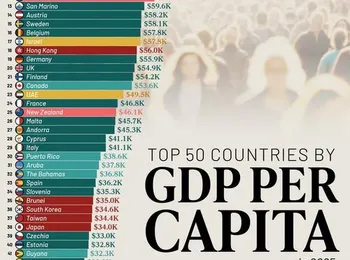President Donald Trump announced a new strategy to control prescription drug prices for government payments, a move expected to significantly lower costs for Medicare. The plan, unveiled on Monday, centers around aligning U.S. drug prices with those paid in other developed nations, with Trump asserting the potential for savings of up to 90% in Medicare payments. However, the specifics of the plan remain somewhat unclear, and experts have raised questions regarding its legality and practical implementation. Trump stated, "Whatever the lowest price is in other developed countries, that’s the price we’ll pay." He further elaborated on the rationale, framing it as a response to the global trade war and advocating for a shift in responsibility for drug costs.
Despite the ambitious goals, concerns have been voiced by the pharmaceutical industry, particularly through PhRMA, who describe the plan as a "bad deal" for American patients, arguing that price controls could stifle investment in crucial drug research and development. This proposed approach, often referred to as a "most favored nation" strategy, has a history, having been attempted during Trump’s first term before being blocked by a court order. The current executive order mirrors a similar attempt made during the final weeks of his presidency. Importantly, this initiative is not anticipated to directly impact consumer prices at pharmacies. Instead, it’s projected to primarily affect drugs covered under Medicare Part B, which provides insurance for doctor’s office visits and related services.
The U.S. consistently spends considerably more on these drugs compared to other wealthy nations, a persistent criticism from both sides of the political spectrum. In 2021, Medicare Part B drug spending reached a staggering $33 billion. Trump’s administration is framing the announcement as a major taxpayer savings initiative, though many Americans are unlikely to realize immediate financial benefits. The scope of the impact is expected to be limited to specific drugs administered in a clinical setting, such as cancer treatments via infusion and other injectable medications. Medicare serves approximately 70 million older Americans, highlighting the significant scale of this undertaking. Throughout his presidency, Trump has repeatedly addressed the issue of high U.S. drug prices, a long-standing point of contention between major political parties. Despite years of debate, a comprehensive legislative solution has yet to materialize.
The current executive order is anticipated to be incorporated into Trump’s broader "One Big Beautiful" budget proposal, which is currently facing challenges in gaining support within the Republican-contro lle d Congress. This ambitious budget includes substantial cuts to both Medicaid and Medicare, projections suggest these cuts could result in millions of Americans losing their health insurance coverage. The potential impact of this policy change underscores the complex interplay of healthcare, economics, and political considerations within the United States. Further developments and congressional responses will be critical in determining the ultimate success and long-term effects of this strategy.
























